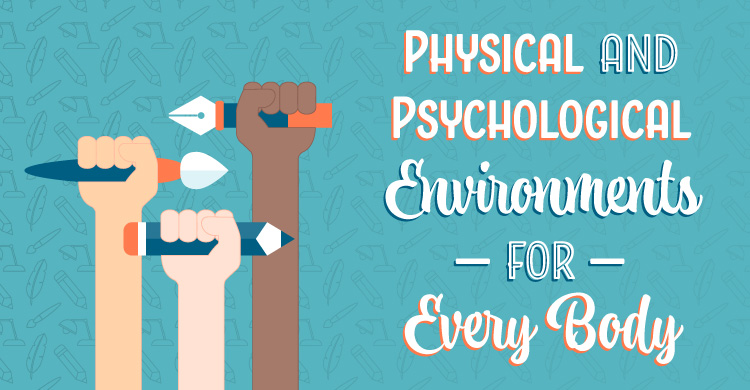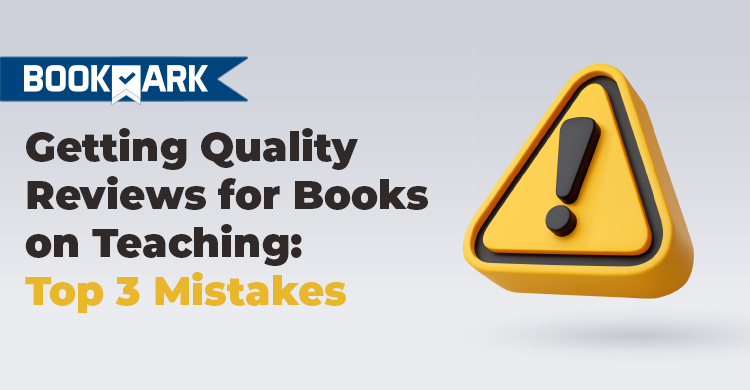I like to think of myself as pretty aware of ableism. I was diagnosed with major depressive disorder and generalized anxiety disorder back in the 1990s and while I’ve learned to live with both thanks to having worked with great therapists (and, not for nothing, being married to one), my mental illnesses continue to be a trip hazard on my professional path.
Also, my husband and coauthor Jonathan Weinstein and I have a son who is autistic and goes to a school for students with special needs. From the moment I arrived at his campus, I noticed how his school environment is built for students with needs like—and unlike—his.
Almost the entire campus of my son’s school is flat, consisting of lots of little one-floor buildings with no stairs or elevators for wheelchair or walker users to navigate. Between buildings is lots of space for students who need to get outside, move around, and change their body temperature to help them reset their nervous systems. The main building is organized around a sensory gym. Classrooms contain a variety of tools and spaces to help students up-regulate and down-regulate. The school employs talented teachers, therapists, administrators, paraprofessionals, and staff members who bring expertise, compassion, and creativity to the work of supporting students like and unlike my son.
You would think, given my experience, that my writing would reflect sensitivity to the needs of students with diverse abilities. But I only very recently realized that the activity on pages 51-54 of my book EMPOWER Your Students (Porosoff & Weinstein, 2018) has ableist language in its title. The activity has students explore different spaces in their school—one space where they feel successful, one space where they feel unsuccessful, and one space where they feel neutral. Specific prompts help the students discover how each space is built around an implicit definition of success. Then, students define success for themselves based on their own values, and they make values-based commitments to how they want to behave in different spaces.
Words matter
Having students create their own definitions of success, based on the values they bring to school from their homes and communities, can promote equity and inclusion. This individual work is not the same as the systemic work of building schools where all students can be successful, but EMPOWER Your Students intentionally and explicitly focuses on what’s within students’ immediate control. But the activity I’ve just described is called “A Walking Tour.” Jonathan and I both grew up just outside New York City, where various neighborhood walking tours help even those who know the city well learn more about its cultural histories without getting into a vehicle. But “walking tour” presumes that a person must walk in order to experience different neighborhoods or, in the case of my protocol, different parts of their school. The term erases individuals who use assistive devices to move around. Somewhat ironically, but also not surprisingly given the ways that privilege prevents those of us who have it from seeing how the world was built for us, an activity that is supposed to empower all students has the opposite effect for students with certain disabilities.
To anyone who read my book and felt unseen, I am so deeply sorry. You matter to me, and I see you. If we ever get to write a second edition Jonathan and I will retitle this activity, “A School Tour.” That title better reflects the activity’s purpose, and it’s truer to the values of equitable participation, belonging, and empowerment that led Jonathan and me to write the book in the first place.
Support for all students
We also want to emphasize the community’s responsibility to build environments that support all students. Some years ago, Roxane Gay (2018) invited a group of authors to contribute to an essay series called “Unruly Bodies.” One of my favorite essays is called “Conformation,” by author and transgender rights activist S. Bear Bergman (2018). When we cite his essay in Two-for-One Teaching (Porosoff & Weinstein, 2020), which we now need to go through and check for ableist language, we pose the question, “What makes bodies unruly at school?” (p. 85).
Teachers who have responded to this question in our workshops reference all kinds of ways students’ bodies refuse to follow the rules our schools and society put in place. Bodies emit sounds and odors, they ache and twitch, they react to antigens and allergens, they grow hair and hips, and they produce varying amounts of melanin.
Touring a new type of school
Looking at the protocol I’ll henceforth refer to as “A School Tour,” I wonder: What would it look like if educators assumed and celebrated the unruliness of bodies? What if we built schools for all students to succeed, not despite their bodies but with them? What would the signage on bathrooms look like, and how would stalls be constructed? How would the school schedule accommodate the need for breaks? How would classrooms be arranged? What books would be on the shelves? What kinds of seating would there be? What would the walls be made of? Would there even be walls? Where and how would students move their bodies, not only between lessons, but during them? What kinds of sensory tools would be available? What kinds of snacks would we provide?
Sometimes I read statements beginning with the words, “COVID-19 forced us to…” Yes, in our pandemic world, rethinking our buildings became a matter of life and death for all bodies. Now that our desks are distanced and some of us are thinking about ventilation and plexiglass barriers, how can we build school environments where all bodies belong?
I’m no expert on physical environments, but to build psychological environments where all bodies belong, we can begin by looking in our own work for language that stereotypes, subjugates, or silences. I found ableist language in my work. Is it in yours? What would your teaching look like if you proceeded from the assumption that all bodies are unruly? What will you do today to ensure all bodies belong in your classroom?
Bergman, S. B. (2018). “Conformation: The Body No Longer Policed By Gender,” Gay Mag. Retrieved April 30, 2021 from https://gay.medium.com/the-body-no-longer-policed-by-gender-c92d6163de9b
Gay, R. (2018). “Unruly Bodies,” Gay Mag. Retrieved April 30, 2021. https://gay.medium.com/unruly-bodies/home
Porosoff, L. & Weinstein, J. (2018). Empower your students: Tools to inspire a meaningful school experience. Bloomington, IN: Solution Tree.
Porosoff, L. & Weinstein, J. (2020). Two-for-one teaching: Connecting instruction to student values. Bloomington, IN: Solution Tree.






